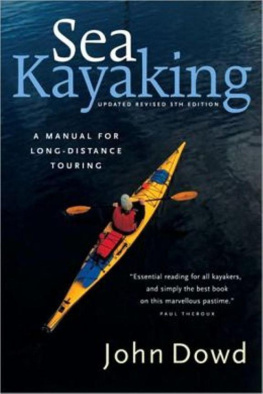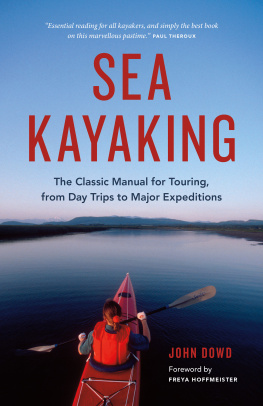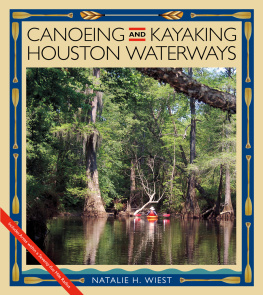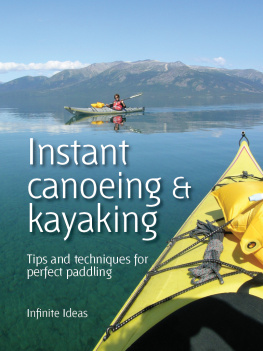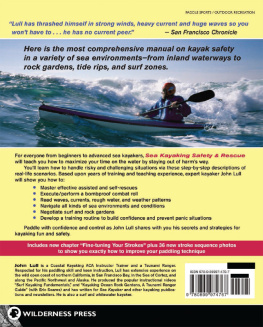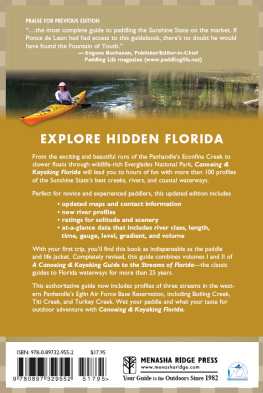Acknowledgements
My thanks to Ken Fink, Matt Broze, Lee Moyer, Dan Lewis, John Dawson and Mercia Sixta for their immediate and helpful contributions to this and previous editions. A special thanks to Robert Bringhurst, my first editor, whose influence is still keenly felt after four subsequent editions, and to Marilyn Sacks, Nancy Flight and Lucy Kenward for their patient editorial massaging. Thanks to Sasanuma San and Yama-Kei Publishers Co. Ltd., my publishers in Japan, for the use of their excellent illustrations. Finally, thank you to Beatrice Hawkeye, my good wife, for her usual valuable input.
Appendix A: Transoceanic solos
On the morning of August 1, 1928, Capt. Franz Romer was discovered fast asleep in his kayak in the harbour of St. Thomas, Virgin Islands. Romer had paddled and sailed nearly 4000 miles from Lisbon, Portugal, via Las Palmas in the Canary Islands. He had encountered two hurricanesone between Lisbon and Las Palmas and the other between Las Palmas and St. Thomasand on the last leg of his journey had been continuously at sea for two months. Between April and August the New York Times carried several brief articles on Romers voyage. A more extensive report appeared in the issue for Sunday, September 23, 1928ten days after it was written. Here are some excerpts.
SAN JUAN, PUERTO RICO, SEPT. 13Captain Romers visit here was unheralded. He put into port from St. Thomas after about twenty hours sailing time. At St. Thomas he had had a rest of six weeks after 58 days of calm and storm from Las Palmas, Canary Islands, to the Virgin Islands. His experiences during that time can best be imagined, for he spoke little of them. He knew though, he said, that he was going to get all the way across the Atlantic, and he still had the greatest confidence in reaching the United States safely when he left here. From Florida he plans to make his way up the coast to New York City. If possible he will fly back to Germany. Neither the air nor the sea nor things above or beneath seem to have any terrors for him.
Other men have crossed the Atlantic alone in various kinds of boats, have gone around the world, in fact. But Captain Romers craft is certainly the first of its kind to venture on such a journey and probably the tiniest.
The Deutscher Sport is a wooden frame craft of the sailing canoe type, covered with rubber and canvas. It is 21 feet long with [2] feet of beam, and a depth from canvas covered deck to rubber bottom of 18 inches. Frame and covering may be dismounted and rolled in a bundle a man might haul under his arm. It carries an 8-foot mast. The deck is not more than 6 inches above the water line. At most times it is awash. So close is Romer to the water all the time that he may drop his hands over the sides and dabble in the ocean. Water is kept out of the cockpit by means of rubber sheets which he fastens to a framework about the cockpit and then about himself. At night he may cover himself over completely with a combination helmet and cape of rubber which he fastens to the deck. He then breathes through a tube, gas-mask fashion. He puts this on instead of pajamas when he goes to bedand going to bed is just the same as sitting up. His navigating instruments include a small compass, barometer, sextant and glasses. At St. Thomas, Captain Romer mounted a small outboard motor that was sent out from Germany. He said the motor might come in handy in the case he ran into hurricane weather. His fuel supplyfive gallonswas lashed on deck just aft of the tiny cockpit.
The craft is Captain Romers own design and he set sail in it from Lisbon, Portugal, on the last day of March ....
What happened during those first days of the lonely voyage only Captain Romer and his log know. He told little here. But he suggested enough to set the imagination to work. For instance, he said that the seas were so high at times that he did not even think whether he would ride them. When he anchored at Las Palmas he said he knew that his trip would be successful, that nothing any worse than the experiences of the first part of his journey could possibly befall him.
In those first days there were periods when he was wholly unconscious, he believes, and other times when he was only partly conscious. He managed to keep his course much of the time with rudder line tied to the boom so that it mattered little whether he was asleep or awake. But there were days and nights when he had no sleep. And during all this time he was steeling himself to the discomfort and soreness that came from the necessity to remain for hours in one position; the exposure to sun and wind and rain and spray; fair days and storm; nights of either stars or clouds. And day or night for companions he had the waves and the uncommunicative inhabitants of the sea. Sometimes he sang to all outdoors, or talked to himself.
Arriving at Las Palmas on April 17, it was not until June 2 that he got underway again. During that time he says he was ill and had a fever. If it was from exhaustion he neither admitted nor suggested it. But during that six weeks he got himself in shape to sail again, only to find that officials were so astounded at this daring that they refused him clearance papers for his ship. He slipped out of port at night.
If it may be said he had a little more room in his canoe after leaving Las Palmas, it is as much figure of speech as fact. At Lisbon he had stored in almost the entire hold of his craft sufficient supplies of food and water to last him across the Atlantic. The more food and water there was, the less room he had to stretch his legs. Gradually he ate himself into his own ship ....
From Las Palmas Captain Romer set out again, little dreaming that it would take him 58 days to travel the 2,730 miles between Las Palmas and St. Thomas. At St. Thomas they gave him an official public reception and a medal. But this was after he had caught a few winks of sleep and visited the barber for the first time in two months and had had a chance to park his canoe in George Levis store, where thousands viewed it with much awe and exclamation.
Between Las Palmas and St. Thomas there were days of dead calm, days of blistering heat, days and nights of storm. Sun and salt spray tortured Romers hands and arms, and they were swollen and blistered and stiff. He lost his hat in a wind. Then his head and neck and back got more of the sun. He sat until he could sit no more. He stood until his feet and legs would bear his weight no longer. Then he sat some more. Three sharks took a curious fancy to his craft. They played about the canoe, swimming from side to side, at times darting under the boat and coming so close that he could feel the scrape of the fins through the flexible rubber bottom. Romer, lonely, talked to the sharks. They swam away.
His trip from St. Thomas to San Juan was probably the shortest leg of his whole trip to New York, unless he makes more stops up the coast than he seemed to have in mind here.
Romer is 29 and was born at Constance, in South Germany.... During the war he was in submarines, and before that he worked in the Zeppelin plant. After the war, for a time, he took up aviation and later went to sea.
Captain Romer said he did not swim. What good would it do me? he asked.
A few days after the foregoing piece was written and before it was published, Romer slipped out of San Juan Harbour, missing the hurricane warning that apparently had just been posted. The addition of motor and fuel tank had ruined the trim of his kayak, but given the fierceness of the storm he unwittingly paddled intosurely the worst of the three he met on that voyageit is hard to believe that he would have survived even in a perfectly balanced craft. As it is, no one ever saw Franz Romer or his boat again.

